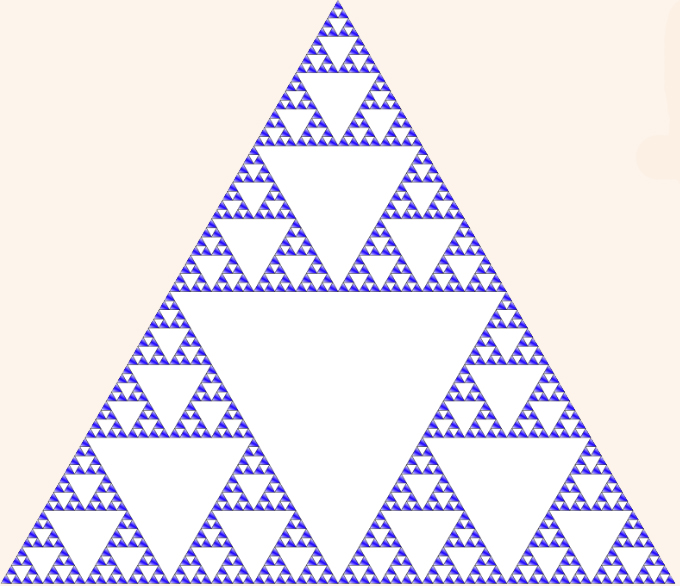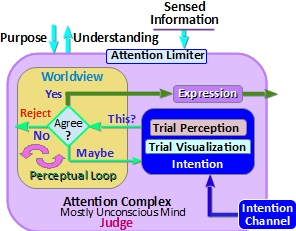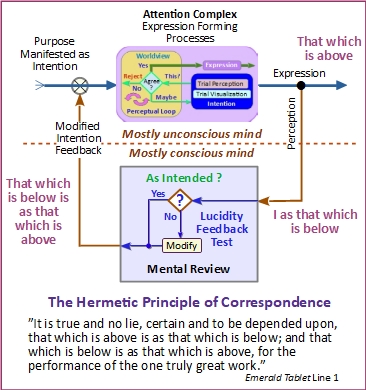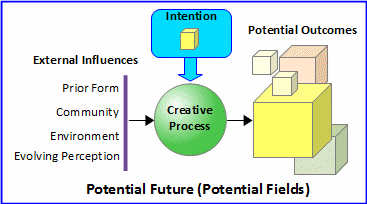
Abstract
While designing a model to describe the implications of the Trans-Survival Hypothesis, it became clear that etheric space (greater reality, nonphysical) must be described in terms of conceptual influences, rather than physical forces. The field concept best describes conceptual influences and is useful as a basic building block for modeling reality. This paper explains the field concept as it is used in the Implicit Cosmology and describes some of the types of fields.
Introduction
The Implicit Cosmology is based on the assumption that reality consists of life fields and their purposeful expressions organized by naturally occurring principles. The field concept has proven the most useful for describing reality, consciousness and life fields.
Building Block Concepts
This paper describes the various ways the field concept is used in the Implicit Cosmology beginning with the foundation concepts:
Reality
The initial state of reality is modeled in the Implicit Cosmology as an expression of curiosity about the nature of self. The intended final state of reality is understanding that satisfies that curiosity; however, understanding is modeled here as a state of awareness that is approached but never completely achieved.
Etheric
The realm of mind and thought is not physical. It appears to be conceptual in the sense that thought is about a thing and is not the physical thing itself. The “space” that mind inhabits is also treated as conceptual in the Implicit Cosmology. It is modeled as a dimensionless singularity that is conceptually infinitely large. The etheric (etheric space), then, propagates thought.
Organizing principles govern life field’s expressions. Compare this characteristic of the etheric with the way that organizing physical principles are an inherent characteristic of the physical aspect of reality. Such implicate physical principles as electron charge and the natural rate of decay influence every aspect of formation in the physical. In the same way, implicate Organizing Principles in the etheric govern the formation of reality.
Fields
A field is modeled here as a set of elements with related characteristics which are bound into a system by a common influence. A community of likeminded people can be modeled as a field bound by a shared interest. For instance, the USA can be modeled as a field with the US Constitution as the attractor and resulting organizing principles (elements of the Constitution) as the influence which define the extent of the field known as the USA.
An element of one field can be an element of other fields. For instance, the USA can also be an element of an international field with greenhouse emissions as an attractor. In the etheric, the influence binding elements of a field, is the intentional expression of purpose.
Thoughtforms
Thought is the outward expression of life fields. Thoughts are modeled as etheric fields that include such characteristics as meaning and intention. If that meaning includes the attribute of physicality, they will be experienced as part of the physical.

The Attention Complex is a mostly unconscious functional area of our mind. It is nonphysical and perpetually forms our expression based on the influence of our worldview on sensed information. Our expression is a “what we think is true” version of what we sense. See About First Sight Theory.

The mostly conscious mental review functional area of our mind represents our sense of “I am this.” It is nonphysical and perpetually considers our unconscious expression developed in our Attention Complex (above) to form our conscious perception of what we think is true. The Lucidity Feedback Test represents our conscious decision of “do I agree with my expression and if not what do I intend?” The output of that test represents a feedback signal to the Attention Complex intended to alter expression. See Author’s Point of View.
Fields in the Form of …
Here is a brief list of the various ways in which you will encounter the field concept:
Etheric Field
As stated above, a field is defined here as a set of elements with related characteristics which are bound into a system by a common influence. The field concept is used as a building block of reality. Of course, everything is in the etheric and physical is an aspect of the etheric. While I speak in terms of one kind of field or another, it is important to remember that all fields have essentially the same fundamental characteristics discussed above.
Life Field
Think of who we really are, our immortal self, as a life field organized by a core personality. Our core personality functions as an attractor to bind all of our mental functions into the life field. As the interface with parent and sibling life fields, it acts as the custodian of our purpose and receptor of our acquired understanding. The Attention Complex and Creative Process Diagrams above represent the major elements of a life field as modeled in the Implicit Cosmology.
For the Implicit Cosmology, the initial state or first cause of reality is stipulated to be curiosity about the nature of reality. No other attribute is suggested for First Cause. It is not a person and has no godly characteristics. It is just an initial question that gives reality the three fundamental characteristics of curiosity (core personality), cognizance functions (Attention Complex) and understanding (conscious self).
The expression of curiosity establishes the intended final state of reality as understanding. All else in reality are the fields and functions required to satisfy curiosity with understanding.
In this cosmology, processes supporting acquisition of understanding, described here as life fields, are implied by the expression of curiosity. Life fields are etheric fields which have a personality as the observer and source of purpose, an intelligent core as a formative principle, a mostly unconscious mind as judge and conscious self as experiencer. See the Attention Complex and Creative Process Diagrams above
Also in the Implicit Cosmology, the nested hierarchy of reality contains only life fields and their expressions as thoughtforms. That means all other forms of etheric fields are expressions of life fields.
Reality Field
The reality field is modeled as the difference of potential between curiosity expressed at First Cause and satisfaction of curiosity as a final state. In the nested hierarchy of life fields, the reality field represents the top field, and in effect, all else is conceptually “within” that field. While there may be something outside of the reality field, the scope of this cosmology is limited to within the field.
In a nested hierarchy of life fields, our parent life field is our local reality field. All that means for us is that we cannot fully understand the nature of the greater reality (actual reality) until our collective of sibling life fields acquire sufficient understanding of our parent’s local reality for our parent to fulfill its purpose. This is the Principle of Perceptual Agreement which is defined here as “Personality must be in perceptual agreement with the aspect of reality with which it will associate.”
Contact Field
A “contact field” can be considered a special case of entangled thoughtforms producing a local intended order. The rapport of cooperation amongst people builds what might be thought of as a contact field which facilitates the perception of an etheric-to-physical influences, probably because of the accumulated expectations associated with the subject.
We normally think of intention as the external influence of thoughtforms, but here, expectation appears to be the form in which intention is expressed. That is, an expectation to experience whatever the thoughtform represents.
A contact field can also be thought of as a type of thoughtform which becomes entangled with a group of people. This effect is seen in reportedly haunted places, but more generally, it is seen in churches and places often considered with reverence. As we learned in the ATransC, a widely distributed community is capable of building a contact field.
Spiritualist development circles can develop substantial contact fields by way of rapport amongst member sitters, focused intention and long-time association. It is thought that this accumulated field facilitates trans-etheric influences.
Intention Field
Expression of intention (intended outcome) is generally thought of as a thoughtform which acts as a formative influence for physical action (motion, voice), conscious thought or an intended order field. Intention fields are thought to persist as long as the personality maintains attention on the intended outcome.
Potential Field
Events are accompanied by a probability signature referred to here as a potential field. In this concept, an event might exist in the etheric as a potential to occur. Each potential field represents imagined possible characteristics of an event, so that an event that has occurred may have been preceded by many potential fields representing alternative outcomes.
Events are a product of the Creative Process, (below) and the potential field is characterized according to the quality of attention, clarity of visualized outcome and extent of intention to make it so. Visualization is moderated by worldview so that the Principle of Perceptual Agreement applies.
The lifecycle model for an event begins with the inclination to do something. The actual decision to act may never come and the possible way to act may take many forms. Each possible way to act that emerges into the creative process is thought to produce a potential field. How far into the process the event progresses determines the influence of the potential field.
Based on this concept in the Implicit Cosmology, precognition might be explained as a person sensing these potential fields in their current state. While they represent possible outcomes, they are thought to contain only the logical extension of current states. The actual realization of the potential dependent on circumstances at the time of their realization.

Psi Field
Psi is a place keeper term used in parapsychology for an as yet undefined characteristic of reality which is experienced as the influence of thought.
While physical energy is local and time-dependent, as defined in parapsychology, the Psi Field is experienced as being everywhere at the same time and as being independent of time. The Psi Field concept is often applied as a “medium” of propagation for thought (Psi). In some versions of the theory, the Psi Field is treated as an emergent quality of the physical.
The term Psi is often used in the Implicit Cosmology as it is intended in parapsychology. Psi Fields are modeled as etheric fields.
Venue Field
In this model, any field that becomes a container for experience is considered a venue field. Venue fields are thoughtforms based on worldview (habit) and intended outcome. A venue field may be as simple as a situation imagined by a person to explore how it might be to drive a new car or to roller skate.
A venue may also be imagined by cooperating life fields, possibly representing many different collectives. The physical universe is considered a venue field as a subset of the reality field.
Following the Principle of Perceptual Agreement, (below) a venue field should be considered an evolving local reality in that the creating personalities would necessarily need to begin with the original expression of intention limited by the scope of their worldview.
That original expression of intention would begin a process of evolution from what is first imagined toward complexity matured enough to support the desired experiences. This evolution would be guided by that intended purpose. Unless the venue is adopted from a previous venue, avatar life fields would likely have to evolve as the venue evolved.
In other words, “Nature’s Habit” cannot exist without evolution, however that evolution would be guided by previous understanding evolving from earlier results of the creative process.
Organizing Principle of Perceptual Agreement: Personality must be in perceptual agreement with the aspect of reality with which it will associate.
The Creative Process: Organizing Principle: Changes in reality are expressed via personality’s attention on an imagined outcome with the intention to make it so.
Cooperative Community Fields
This is an emergent field produced by a group of likeminded people cooperating to achieve a shared vision. Rapport is part of this, as is the idea of a contact field. Gaining understanding is facilitated by interacting with others.
This is also an Organizing Principle in the Implicit Cosmology: Personalities are attracted to communities of like-minded people cooperating to facilitate progression. See the Cooperative Community Essay.
By “cooperative,” I mean active participation of members. Others in the community need not agree with us. The act of composing our thoughts to speak helps us understand what is in our worldview. Supportive or argumentative, the reaction of our listeners is important feedback which helps focus on what makes sense.
The Way of Progression
Through community comes knowledge
Through teaching comes understanding
It takes a collective
Morphic Fields
The formation of an avatar which is native to a venue field is thought to be a process that evolves as the venue field evolves. In the Hypothesis of Formative Causation proposed by Rupert Sheldrake (aka Morphic Resonance), development of a biological organism from single cell to an adult instance of a species is governed by a morphogenic field Sheldrake describes as “Nature’s Habit.”
A person is defined in the Implicit Cosmology as an etheric personality entangled with a human in an avatar relationship for the lifetime of the human. This “spirit having a human experience” model implies the influence of two minds. In the Two-Mind Solution to the Survival Hypothesis Paper, Mind 1 is modeled as the visiting or symbiotic life field and Mind 2 is modeled as a nested hierarchy of life fields organized by a morphogenic “mind.”
![]()
